
The current breakthroughs in genetics are mostly due to the improvement in applications and function of CRISPR/Cas9 systems. Using highly precise gene editing, geneticists can work in various fields, helping move scientific knowledge to previously unimagined heights.
Table of Contents
- Top 25 Genetics News in 2018
- 1. Checking with temperature: how to ensure that the mutation sticks to the plant.
- 2. Geneticists provide a glimmer of hope for AIDS patients – Functional cure of HIV using CRISPR.
- 3. The viruses strike back – and help science: Discoveries of new CRISPR enzymes.
- 4. Gene drives, vector born diseases and the fight against invasive species.
- 5. Correcting the hemoglobin: novel therapies for thalassemia and sickle-cell anemia.
- 6. Lentiglobin: a new gene therapy for hemoglobin disorders in the starting blocks to enter clinical practice.
- 7. Conquering inflammation disorders with gene editing
- 8. Looking inside leukemia: Unraveling novel genes that are essential for acute myeloid leukemia and normal hematopoiesis.
- 9. A new CRISPR/Cas toolkit: Cas13, a new Swiss Army knife for plant biologists.
- 10. Sorting through the tumors: A system for detecting high impact-low frequency mutations in primary tumors & metastases.
- 11. What your RNA can tell: The new world of RNA biomarkers and explorers’ prudence rules.
- 12. Sneaky RNA: Regulation of genome‐wide DNA methylation by mobile small RNAs.
- 13. Was life without DNA and enzymes possible? The answer is yes! Visualizing primer extension without enzymes.
- 14. Editing mature neurons: providing hope for treating brain disorders.
- 15. Better GMOs for food security: Genome Editing for Global Food Security.
- 16. Discovering the secrets of the Bcl2 family: Bcl-2 on the brink of breakthroughs in cancer treatment.
- 17. Knowing what makes bacteria tick: using bacterial machinery to manipulate them.
- 18. A novel editing protocol: Electroporation of mice zygotes with dual guide RNA/Cas9 complexes for cloning-free genome editing.
- 19. Turning the tables: converting bacterial ammo to antibacterial mines.
- 20. Playing with chromosomes: How chromosome fusion drives evolution.
- 21. Combining 16 into one: Creating a functional single-chromosome yeast.
- 22. A universal master: CRISPR applications continue to grow in number and variety.
- 23. Gene editing against hepatitis viruses: CRISPR/Cas-mediated gene editing to treat infections with hepatitis B & C viruses.
- 24. Taking care of the motor neurons: novel gene-based treatments for spinal muscular atrophy.
- 25. Gene editing holds the promise of treatment for an orphan brain disorder.
Top 25 Genetics News in 2018
Here are the top 25 recent breakthroughs in genetics, and new genetic discoveries in Genetics for 2018.
1. Checking with temperature: how to ensure that the mutation sticks to the plant.
 The first genetic breakthrough in our list for 2018 is for the plant world. Bertier et al. have offered an ingenious way to assess whether the novel mutation caused by the CRISPR/Cas9 system is inheritable in lettuce.
The first genetic breakthrough in our list for 2018 is for the plant world. Bertier et al. have offered an ingenious way to assess whether the novel mutation caused by the CRISPR/Cas9 system is inheritable in lettuce.
- He has created a system that couples the lettuce LsNCED4 gene that determines the temperature at which the plant seeds can effectively germinate together with the target sequence in his vector.
- If the intended modifications have indeed affected the germ line, they would also lead to the development of seeds that germinate outside the normal temperature range in the species.
- As a result, the screening for successfully modified seeds is greatly simplified.
![]()
2. Geneticists provide a glimmer of hope for AIDS patients – Functional cure of HIV using CRISPR.
 The next discovery for 2018 is in the human genetics. Currently, living with AIDS means being completely dependent on medications.
The next discovery for 2018 is in the human genetics. Currently, living with AIDS means being completely dependent on medications.
- However, there is some approaches that can potentially render this therapy unnecessary; Such approaches include using small cellular molecules for activating infected cells, genetic modifications of immune cells and diverse immunotherapy methods.
- Unfortunately, all the methods described are still experimental and do not display 99.9% efficacy.
- The scientist aims to develop a method that allows the patients to live without medication long-term.
![]()
3. The viruses strike back – and help science: Discoveries of new CRISPR enzymes.
 The famous CRISPR-Cas9 system has evolved in bacteria as a means of defense against their natural predators – bacteriophages.
The famous CRISPR-Cas9 system has evolved in bacteria as a means of defense against their natural predators – bacteriophages.
- Recently it was discovered that bacteriophages had developed their own “anti-CRISPR” strategies in retaliation.
- This unique anti-bacterial weaponry can be repurposed to fine-tune and control gene editing experiments, which increases their efficacy and specificity.
![]()
4. Gene drives, vector born diseases and the fight against invasive species.
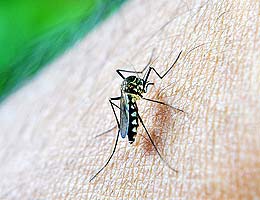 As medications fail in treating malaria and other vector-borne diseases, it is becoming increasingly important to control the vector populations themselves.
As medications fail in treating malaria and other vector-borne diseases, it is becoming increasingly important to control the vector populations themselves.
- The most successful control strategy to date is the introduction of gene drive – a specialized gene system based on CRISPR/CAS9 that introduces certain traits into the wild population bypassing the natural inheritance mechanisms.
- At present, two strategies were deemed effective and are even used in the field: the introduction of genes that decrease the ability of the insects to reproduce or introduction of genes that make the vector resistant to the parasite.
![]()
5. Correcting the hemoglobin: novel therapies for thalassemia and sickle-cell anemia.
 Beta-thalassemia and sickle-cell anemia are both monogenic genetic disorders affecting the hemoglobin gene.
Beta-thalassemia and sickle-cell anemia are both monogenic genetic disorders affecting the hemoglobin gene.
- All previous therapies, including blood transfusions and bone marrow transplants, were not effective enough.
- Precise gene editing systems, such as CRISPR/Cas9, has led to the development of the novel therapy method.
- In this approach, stem cells isolated from the patients themselves are cultivated, and their hemoglobin gene is edited explicitly in order to restore its function.
- Then the edited stem cells are introduced back to the patient, where they can give rise to healthy blood cells.
![]()
6. Lentiglobin: a new gene therapy for hemoglobin disorders in the starting blocks to enter clinical practice.
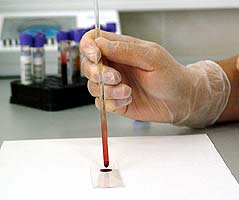 Another gene therapy treatment effective for β-thalassemia and sickle cell anemia is approaching the health market.
Another gene therapy treatment effective for β-thalassemia and sickle cell anemia is approaching the health market.
- Patients are given a lentivirus-based vector with a functional hemoglobin subunit gene.
- The virus enters blood cells and delivers a good gene variant. The novel agent was LentiGlobin BB305 and will soon be used in Phase III clinical trials.
![]()
7. Conquering inflammation disorders with gene editing
 Gene editing can help not only with single-gene disorders, nut with complex inflammatory diseases as well. The novel treatment strategies include:
Gene editing can help not only with single-gene disorders, nut with complex inflammatory diseases as well. The novel treatment strategies include:
- Introduction of individually edited stem cells targeted at counteracting self-antigens;
- Specifically engineered anti-cytokine vaccines that decrease the susceptibility of target cells to inflammatory cytokines;
- Restoration of damaged tissue with the help of genetically edited stem cells in osteoarthritis;
- Introduction of engineered T regulatory cells subsets;
- Using RNA editing for inflammatory gene expression control.
![]()
8. Looking inside leukemia: Unraveling novel genes that are essential for acute myeloid leukemia and normal hematopoiesis.
 The proliferation of cancer cells is dependent on mutation and activity of specific genes.
The proliferation of cancer cells is dependent on mutation and activity of specific genes.
- In each cancer type, different genes are essential for cancer cells development, growth, and survival. G. Turköz et al. have found three genes that were crucial for the successful development and growth of cancer cells in acute myeloid leukemia – CHD4, EHMT1, and GTF2IRD1.
- Those genes can potentially become gene therapy targets for the treatment of this type of cancer that is especially dangerous for young children.
![]()
9. A new CRISPR/Cas toolkit: Cas13, a new Swiss Army knife for plant biologists.
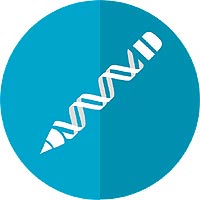 Specific nucleases such as Cas9 and recently discovered Cas12 are already revolutionizing research and therapy.
Specific nucleases such as Cas9 and recently discovered Cas12 are already revolutionizing research and therapy.
- The discovery of new nucleases, Cas13a and CAs13b, have made single-strand RNA editing possible as well.
- Plant biologist view this new tool as an exciting gift. First, RNA editing allows post-transcriptional modification of gene expression. Second, it is a powerful tool for combating RNA-based viruses infecting plants.
- There are potential other applications for this new technology, and combining DNA and RNA editing can allow complex manipulations of metabolism in plants.
![]()
10. Sorting through the tumors: A system for detecting high impact-low frequency mutations in primary tumors & metastases.
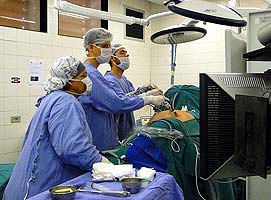 One of the reasons that cancer is so hard to treat is that its cells mutate frequently.
One of the reasons that cancer is so hard to treat is that its cells mutate frequently.
- Because of this, there are multiple clusters of genetically different cells in a tumor. M.Anjanappa et al. have developed a system that involves isolating and cultivating tumor cells.
- This system allows scientists to identify previously undetected mutations in various subsets of the tumor cell population.
- This approach can help understand the composition of cancer tumors better and develop new treatment strategies.
![]()
11. What your RNA can tell: The new world of RNA biomarkers and explorers’ prudence rules.
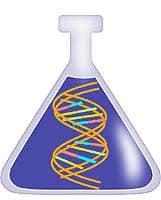 Recently, non-coding RNAs (ncRNAs) have become a focus of extensive research.
Recently, non-coding RNAs (ncRNAs) have become a focus of extensive research.
- Those molecules participate in modulating transcription and epigenetic regulation of genome activity.
- Among other things, some ncRNAs were proposed as biomarkers of disease progression in cancer.
- They can be easily detected in biological liquids, such as blood or urine, and used for evaluation of the patient’s condition.
- However, the sheer number of these molecules and lack of consistent analysis points to the necessity of strict rules in the detection of such molecules.
![]()
12. Sneaky RNA: Regulation of genome‐wide DNA methylation by mobile small RNAs.
 DNA methylation is a crucial epigenetic mechanism that regulates gene activity.
DNA methylation is a crucial epigenetic mechanism that regulates gene activity.
- Small RNAs (sRNAs) are a typical example of the tools that promote such epigenetic control. sRNAs can direct methylation at specific sites of the genome and can travel from cell to cell in the plants, thus controlling their development.
- At present, the study of sRNAs is a booming research field that allows plant specialists to understand the genome activity in plants better.
![]()
13. Was life without DNA and enzymes possible? The answer is yes! Visualizing primer extension without enzymes.
 DNA is often referred to as a “molecule of life“.
DNA is often referred to as a “molecule of life“.
- DNA is now the original recipe for protein synthesis, but there is also RNA that has multiple functions, including regulatory activity.
- More pieces of evidence suggest that this versatile molecule was the first “molecule of life” on Earth.
- Moreover, the first RNAs were produced without the assistance of proteins. In 2018, Zhang et al. have used a series of crystallography-based “images” to document the step-by-step the process of synthesis of RNA without enzymes – proving that such process was indeed possible in the past.
![]()
14. Editing mature neurons: providing hope for treating brain disorders.
 A novel, precise method of gene editing in mature neurons was proposed by Nishiyama et al.
A novel, precise method of gene editing in mature neurons was proposed by Nishiyama et al.
- His method used three components: homology-based DNA repair machinery containing Cas9, a guide RNA for specific sequences, and an adeno-associated virus.
- Using this system, Nishiyama’s team has managed to edit sequences both in embryonic neurons and in adult neurons in aged mice, which opens many possibilities for treatment of nervous disorders, including epilepsy.
![]()
15. Better GMOs for food security: Genome Editing for Global Food Security.
 Genetically modified objects, or GMOs, are not a novel concept.
Genetically modified objects, or GMOs, are not a novel concept.
- Despite being viewed with suspicion, they are the answer to maintaining important crops prone to diseases and other threats.
- With undernourishment and malnutrition being huge issues in various areas of the world, the need for safe and resistant crops is undeniable.
- Improvements in modern gene editing technologies make such plant genome editing much more precise and safer.
- It allows the new crops to become more resistant to diseases, as well as counteract the deficit of specific micro-and macronutrients in the diet.
![]()
16. Discovering the secrets of the Bcl2 family: Bcl-2 on the brink of breakthroughs in cancer treatment.
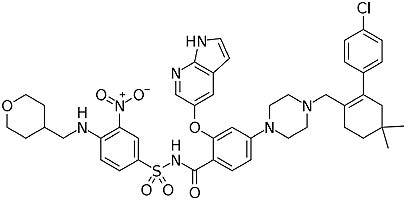 Bcl-2 and related proteins play a crucial role in inducing cell death and cellular differentiation.
Bcl-2 and related proteins play a crucial role in inducing cell death and cellular differentiation.
- This protein is also a key component in the development of some cancers, especially certain types of lymphomas and leukemias.
- The extensive research devoted to this class of proteins has led to the development of a specific Bcl-2 inhibitor – venetoclax.
- This agent can help patients with certain types of chronic lymphocytic leukemia.
- The drug development would certainly not stop there – other members of this family are also potential drug targets which significantly help in cancer treatment.
![]()
17. Knowing what makes bacteria tick: using bacterial machinery to manipulate them.
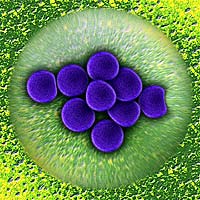 CRISPR-Cas9 machinery has developed in bacteria as a defense mechanism against viruses.
CRISPR-Cas9 machinery has developed in bacteria as a defense mechanism against viruses.
- Having discovered these systems, the scientists now turn the bacterial machinery against the creators themselves.
- As scientists find more new proteins in this family, they also develop novel protocols that allow effective manipulation of metabolism in bacterial cells.
- Previously, mainly E. coli was the beloved model of such engineering. Now, with novel systems, the scientists can turn more bacterial species into cell factories, including Clostridia spp., Bacilli spp., Streptomycetes spp., and even Cyanobacteria.
- As each type of bacterial cell can produce its own substances, endless possibilities are opening up in biotech.
![]()
18. A novel editing protocol: Electroporation of mice zygotes with dual guide RNA/Cas9 complexes for cloning-free genome editing.
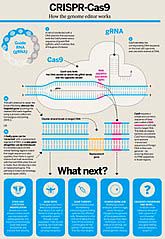 Gene editing in mice is a convenient tool for studying the role of specific genes in mutations in health and disease.
Gene editing in mice is a convenient tool for studying the role of specific genes in mutations in health and disease.
- Until recently, this process involved multiple steps including oocyte microinjections.
- Texeira et al., proposed a much more simplified and direct approach using ribonucleotide complexes containing Cas9 and guide RNA.
- This approach avoids unnecessary damage to the cell and allows the generation of deletions in target genes in mouse zygotes.
![]()
19. Turning the tables: converting bacterial ammo to antibacterial mines.
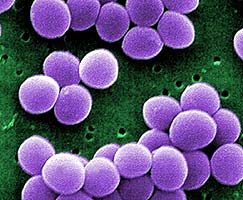 Staphylococcus aureus is a common bacterial agent that becomes resistant to multiple antibiotics and even bacteriophages.
Staphylococcus aureus is a common bacterial agent that becomes resistant to multiple antibiotics and even bacteriophages.
- As common treatments are becoming ineffective, G.Ram and his colleagues propose a novel method. Their team has engineered a common bacterial structure – pathogenicity islands.
- The editing has turned them from toxin-producing factories into so-called antibacterial drones. Once the drone-carrying bacteria are introduced into the bacterial population, the drones destroy the intact bacterial cells.
- The efficacy of the approach was proven in mice. Mice injected with bacteria that contain bactericidal drones survived a lethal S. aureus infection.
![]()
20. Playing with chromosomes: How chromosome fusion drives evolution.
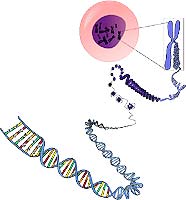 Each species has its own chromosome number, and unbalanced changes to this species-specific number can lead to disorders.
Each species has its own chromosome number, and unbalanced changes to this species-specific number can lead to disorders.
- Chromosome fusion, on the other hand, is not so disastrous. The team of scientists has taken yeast cells that typically contain 16 chromosomes and created lines that contained 8, 4 or 2 fused chromosomes instead, using CRISPR.
- It was found that the organisms with fused chromosomes could function normally, but yeast cells with different chromosome numbers could not produce viable spores.
- This experiment has shown that chromosome fusion can also become a reason for the reproductive isolation of the population and new species development.
![]()
21. Combining 16 into one: Creating a functional single-chromosome yeast.

With the use of genome editing toolkit, Y.Shao and colleagues have managed to merge 16 chromosomes of the yeast Saccharomyces cerevisiae into a single chromosome.
- Though the overall chromosome structure was considerably changed, the yeast cells with such chromosomes could maintain regular activity, but could not survive in certain environments.
- This experiment offers a novel way to study the evolution of eukaryotic genomes.
![]()
22. A universal master: CRISPR applications continue to grow in number and variety.
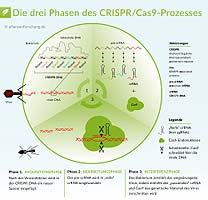 The last several years were undoubtedly the CRISPR-CAS9 period. This system, used by bacteria and archaea as protection against viruses, is now the most advanced tool for gene editing since the 1970s.
The last several years were undoubtedly the CRISPR-CAS9 period. This system, used by bacteria and archaea as protection against viruses, is now the most advanced tool for gene editing since the 1970s.
- The scientist race to produce more effective, smaller and specific editing systems. With the increased specificity and flexibility, novel applications of the system regularly appear.
- Besides inducing mutations and introducing new sequences, this toolkit is now used for:
- introducing novel stop codons;
- manipulating gene expression;
- visualizing chromatin changes;
- modulating the epigenetic changes to the genome;
- screening multiple genes at the same time, using some guide RNAs.
Though enormous progress has been made in this field, developing appropriate and safe vectors for delivery of the systems remains a problem. It is quite likely that the next few years would probably be devoted to their development and improvement.
![]()
23. Gene editing against hepatitis viruses: CRISPR/Cas-mediated gene editing to treat infections with hepatitis B & C viruses.
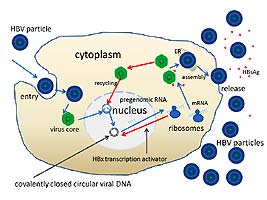 Hepatitis B and C viruses can cause cirrhosis and hepatocellular carcinoma.
Hepatitis B and C viruses can cause cirrhosis and hepatocellular carcinoma.
- One of the mechanisms that help them resist available treatment is the formation of cccDNA during viral replication.
- The discovery of CRISPR/Cas9 systems has provided the researchers with a tool that can destroy it. For instance, a CRISPR/Cas9 system isolated from Francisella novicida was able to destroy the HCV virus, including its cccDNA form, in the culture of HCV-infected cells.
- The approach can’t be translated to human treatment, as it is not yet clear how the editing proteins are to be delivered into the infected cells.
![]()
24. Taking care of the motor neurons: novel gene-based treatments for spinal muscular atrophy.
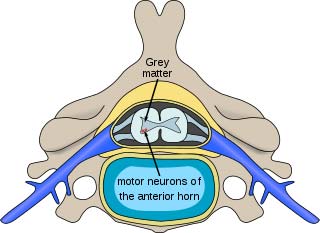 Spinal muscular atrophy is a disease of the motor caused by a mutation in the SMN1 gene that produces a protein crucial for normal activity of motor neurons.
Spinal muscular atrophy is a disease of the motor caused by a mutation in the SMN1 gene that produces a protein crucial for normal activity of motor neurons.
- With genetic mechanism known, it has become possible to control the SMN protein production.
- One of the most promising treatment strategies involves using neuron-specific adeno-associated vector, AAV9 that carries the correct SMN1 gene and can replace the mutated gene in the motor neurons.
- The vector was already tested in mice and brought considerable improvement. As the experiments were successful, clinical trials in infants with SMA are currently being initiated.
![]()
25. Gene editing holds the promise of treatment for an orphan brain disorder.
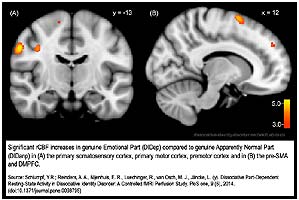 Rett syndrome is a genetic disorder of the brain associated with mutations in the X-linked MECP2 gene.
Rett syndrome is a genetic disorder of the brain associated with mutations in the X-linked MECP2 gene.
- The patients usually have smaller brain size and a variety of other symptoms depending on the level of X-chromosome inactivation.
- The treatment of this syndrome is complicated. Due to the progress in gene editing technologies, there are two potentially successful strategies – targeted inactivation of the X-chromosome carrying the mutated gene, and targeted editing of the mutated gene using the CRISPR/Cas system.
- Both treatments are expected to be most effective in infants and younger children, as the mutation influences the size of the brain.
![]()
As novel methods of genome manipulation are being developed, we may expect even more exciting reports in 2019! Let us eagerly await them!
Do you know of another important breakthroughs in Genetics for 2018 which are not listed above, share them in the comments section below!
![]()






















